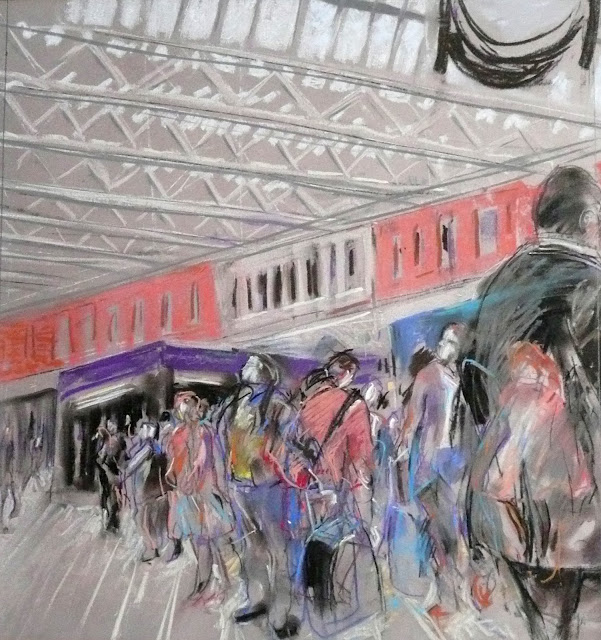Instructor: Barry Jackson (London, UK)
Location: Plaça Universitat
The slightly archaic English expression: ‘Hither, thither, and yon’ prefigures recent
concepts in perceptual psychology, which suggest that we experience the visual world (and representations of it) as three layers of space: usually labelled as ‘personal’, ‘action’ and ‘vista’ space. This workshop sets out to explore how we might exploit this concept when drawing on location.
Just so we’re clear: ‘Personal space’ is the band of space nearest to the viewer, extending perhaps 2 metres at most. ‘Action space’ extends perhaps 20-30m further – representing the furthest distance that the viewer could interact with by shouting, or throwing, perhaps. ‘Vista’ space is all the rest – everything that falls beyond the viewer’s sphere of influence.
Research evidence suggests that this perceptual framework of three broad bands is universal to humans, and that particular sets of perceptual cues relate to the different bands. The reason for this may be that the closer to the individual, the greater the level of potential threat or influence increases. The three bands do not have sharp boundaries, rather they merge one into another, but they are clearly distinct. We experience the world as having these distinct bands. When we walk a city street we are intensely aware of things that are close to us or might be approaching, usually less aware of things in the distance. However, when we draw in a city street, we often choose a viewpoint and scope that doesn’t include personal space, or even vista; or we choose to ignore what impinges on our personal space in the marks we make.
Sometimes the inclusion of personal space, or vista, in a street scene, can be a means of increasing the viewer’s emotional engagement with the scene depicted. How can we capture something of our full experience of urban space in our drawing? There doesn’t seem to be an easy answer! Depicting different depth bands in a picture raises interesting challenges of scale, size and detail for the artist.
The workshop does not aim to provide any answers; it aims to ask questions, about how we experience the visual world around us, and how we communicate that experience on a flat drawing. The workshop process that I envisage is:
1. A brief explanation of the concepts, with some illustrations and a chance to discuss them and their implications, including depth cues.
2. Drawing!
Some of the things I would like us to think about when drawing are:
- What are the cues you can use to depict different bands of space (other than linear perspective)
- What is the effect of including personal space in your urban drawing?
- What problems do you encounter in doing so?
- Is it possible to make urban drawings that focus solely, or mostly on personal space?
- Could you make urban drawings that focus on vista alone, with no intervening action space?
- What are the challenges in making urban drawings that depict all three depth bands, and what are the ways that you might rise to these challenges?
- What effect does the shape of your paper, the materials you draw with, have?
(It may be worth having some spare pieces of paper and some sticky tape so that you can change the shape of your drawing!)
3. At the end of the session I’d like to share our drawings, insights and experiences
Learning goals
The aim is not to promote a particular approach to drawing, but rather to make conscious stuff which is often non-conscious.
In learning outcomes terms, I hope someone participating in the workshop will develop:
- An increased understanding of how they perceive the world
- A specific understanding of the concepts of spatial depth and the ways in which it can be depicted
- An increased repertoire of drawing skills to depict space
- An increased skill in using the representation of depth to make engaging drawings
- An increased confidence in the representation of depth
I would like to encourage participants to take risks with their drawings. Our motto will be: ‘nothing ventured, nothing gained!’
Other sample sketches





No comments:
Post a Comment